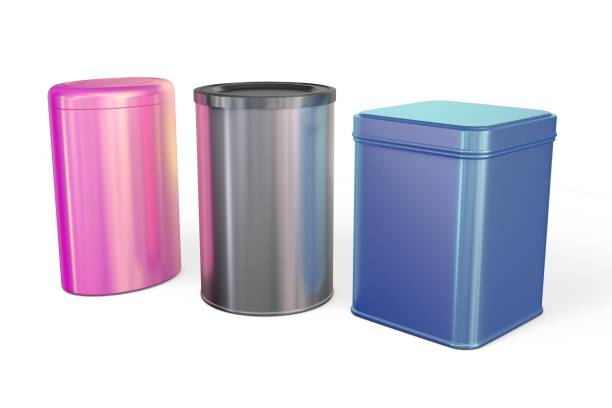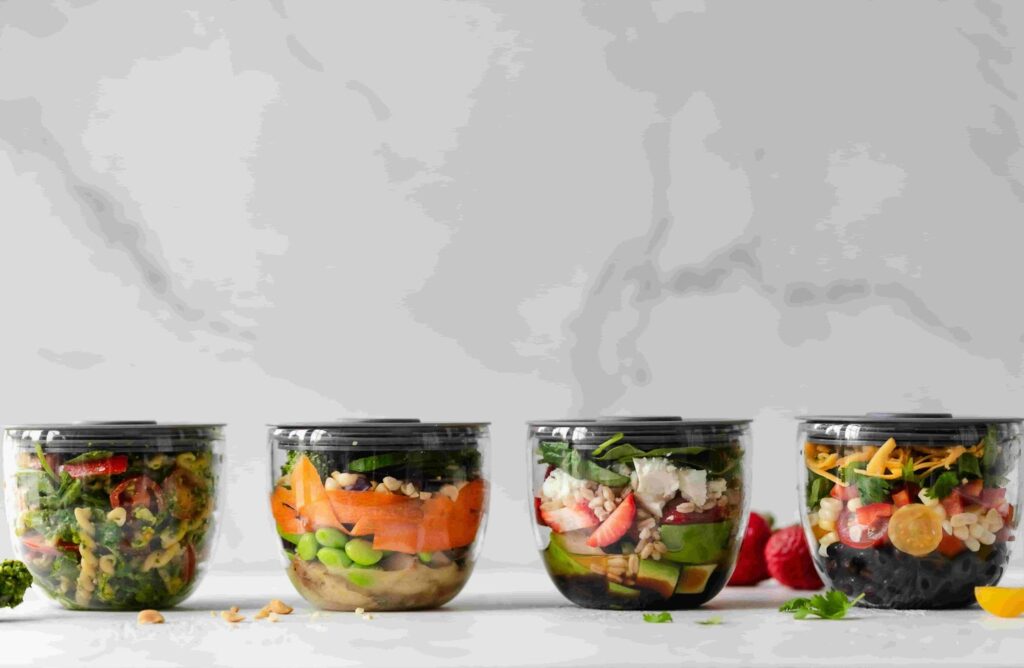Easter is a festive occasion celebrated worldwide, and one of the most popular traditions is giving and receiving beautifully designed Easter tin cans filled with chocolates, candies, and gifts. These tins not only serve as attractive packaging but also provide durability and sustainability, making them a preferred choice for both businesses and consumers.
Among the various types of Easter tins, vintage tin Easter eggs and Easter tin pails are especially popular due to their aesthetic appeal and reusability. But how are these tins manufactured? What makes tin cans different from aluminum cans?
This article will provide a detailed step-by-step guide on the manufacturing process of Easter tin cans, their benefits, and how they compare with aluminum cans.
What Are Easter Tin Cans?

Easter tin cans are metal containers made from tinplate—a material consisting of a thin steel sheet coated with tin. These cans come in various shapes and sizes, from oval-shaped vintage tin Easter eggs to bucket-like Easter tin pails. Their primary purpose is to serve as packaging for chocolates, sweets, and Easter gifts.
Why Are Tin Cans Used for Easter Packaging?
Easter packaging needs to be both attractive and functional, and tin cans have become a popular choice for this festive occasion. Here’s why:
Exceptional Durability
Unlike plastic or paper packaging, tin cans offer superior durability. They are resistant to dents, tears, and moisture, ensuring that chocolates, candies, and gifts inside remain well-protected. This makes them ideal for shipping and long-term storage without the risk of damage.
Highly Customizable Designs
Easter tin cans can be customized in a variety of ways to create eye-catching packaging:
- Printed Designs
Vibrant Easter-themed patterns, such as bunnies, eggs, and spring flowers, can be printed directly onto the tin.
- Embossing & Debossing
Logos, patterns, or textures can be raised or pressed into the metal surface for a premium look.
- Unique Shapes & Sizes
Tin cans can be molded into creative shapes like Easter eggs, baskets, or gift boxes, making them stand out on store shelves.
Reusable & Multi-Purpose
Many consumers keep Easter tin cans long after the holiday because of their practicality. They can be repurposed for:
- Storing cookies, candies, or small household items
- Organizing craft supplies or stationery
- Home decorations, such as flower pots or DIY projects
This reusability adds long-term value to the packaging, making it more than just a disposable container.
Environmentally Friendly & Sustainable
Tin cans are an eco-conscious packaging choice because they are:
- 100% recyclable
They can be melted down and reused indefinitely without losing quality.
- Less wasteful
Unlike plastic packaging, which often ends up in landfills, tin cans have a high recycling rate.
- Recyclable without degradation
Unlike some materials that weaken after recycling, tin retains its properties, making it a sustainable option for brands looking to reduce their environmental impact.
By choosing tin cans for Easter packaging, brands not only enhance the festive appeal of their products but also provide customers with a durable, customizable, and eco-friendly solution.
Raw Materials Used in Easter Tin Cans
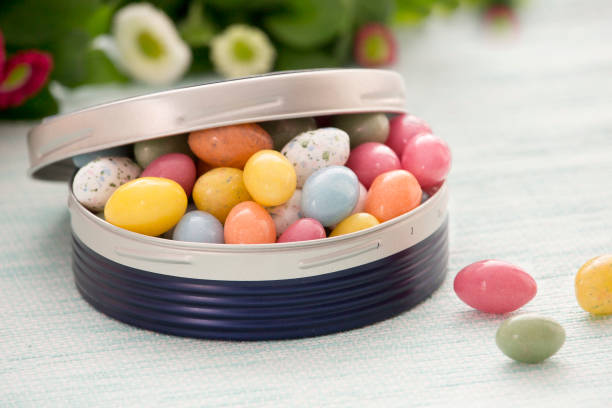
Tinplate – The Core Material in Easter Tin Manufacturing
When it comes to manufacturing Easter tins, tinplate is the primary material of choice. Tinplate is essentially a thin steel sheet coated with a fine layer of tin, combining the strength of steel with the protective qualities of tin.
This unique combination makes it an ideal material for producing high-quality, durable, and visually appealing Easter tins, such as decorative egg-shaped tins and festive pails.
Advantages of Tinplate in Easter Tins
- Corrosion Resistance
The outer tin coating acts as a barrier, protecting the steel core from oxidation and preventing rust formation. This ensures that Easter tins remain in excellent condition even when stored for long periods.
- Strength & Flexibility
Tinplate offers the perfect balance between durability and malleability. It is strong enough to maintain its shape and protect its contents, yet flexible enough to be molded into intricate designs such as Easter eggs, bunny-shaped tins, or themed gift boxes.
- Safe for Food Packaging
The tin layer is non-toxic and food-safe, making it ideal for packaging chocolates, candies, and other edible Easter treats. Unlike some other materials, tinplate does not leach harmful substances or alter the taste and quality of food products.
Protective Coatings and Finishes for Enhanced Durability
To further enhance the longevity, safety, and visual appeal of Easter tins, manufacturers apply specialized coatings and finishes to the tinplate surface.
These treatments provide additional protection against external elements and ensure that the tins retain their vibrant designs and structural integrity.
- Glossy or Matte Finishes
These finishing options enhance the aesthetic appeal of the tins, giving them a luxurious shine or a modern, elegant matte look. The choice of finish allows manufacturers to align with different branding styles and consumer preferences.
- Anti-Scratch Coatings
A protective layer is applied to prevent scratches, scuffs, or wear and tear on printed designs. This is particularly important for Easter tins featuring intricate festive illustrations and vibrant colors.
- Food-Safe Lacquer
A specialized internal lacquer coating is used to prevent any interaction between the tinplate and food products. This ensures that chocolates, candies, and other treats remain fresh and uncontaminated while being stored in the tin.
By combining high-quality tinplate with advanced coatings and finishes, Easter tins are not only functional and safe for food storage but also serve as collectible keepsakes that
Step-by-Step Manufacturing Process of Easter Tin Cans
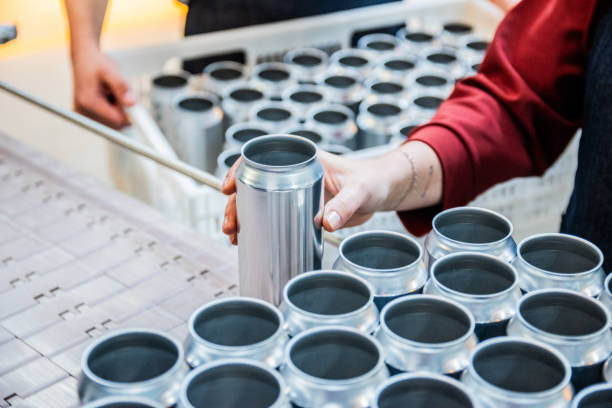
Step 1: Designing the Tin Cans
Before the production begins, manufacturers create digital mockups of the Easter tin pails or vintage tin Easter eggs using design software. The design includes:
- Custom shapes – Oval for egg tins, cylindrical for pails, etc.
- Printed artwork – Easter bunnies, eggs, flowers, and festive messages.
- Embossing or debossing effects – To add texture and enhance branding.
Step 2: Printing and Coating
Once the design is finalized, printing is done using offset lithography. The process involves:
- Applying ink layers to large tinplate sheets.
- Using CMYK or Pantone colors to achieve vibrant designs.
- Curing the printed sheets in an oven for durability.
After printing, a protective coating is applied to ensure scratch resistance.
Step 3: Cutting and Shaping
- Cutting Machines trim the tinplate sheets into specific shapes for the lid, body, and bottom of the can.
- Stamping Presses create the embossed or debossed features on the tins.
Step 4: Forming the Can Structure
For different types of Easter tin cans:
- For vintage tin Easter eggs – Two halves are pressed and joined together to form an egg shape.
- For Easter tin pails – The tinplate is bent into a cylinder, and a handle is attached.
Step 5: Sealing & Assembly
The pieces of the tin cans are assembled through:
- Welding – Used for food-grade tins that require airtight sealing.
- Bonding with adhesive – Used for decorative tins that do not require high durability.
- Seaming – The lid and base are double-seamed for a tight fit.
Step 6: Quality Control and Packaging
Before shipping, Easter tin cans undergo quality testing, including:
- Leak & strength testing – Ensures durability.
- Print & finish inspection – Checks for design accuracy.
- Food-safety compliance checks – Ensures proper coatings are used.
Once approved, the tins are packed in bulk and shipped to retailers and brands worldwide.
How Do Tin Cans Compare to Aluminum Cans?
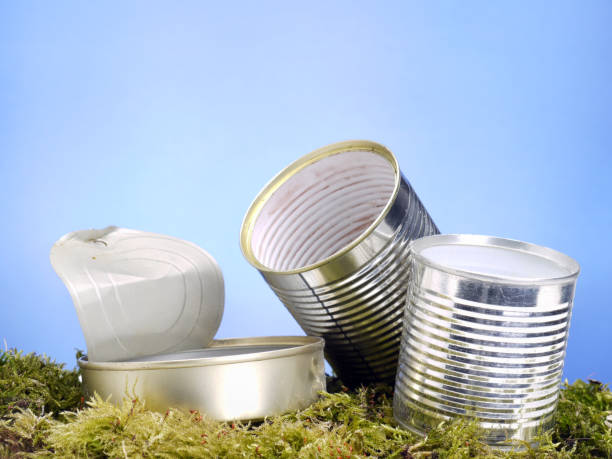
Many people confuse tin cans with aluminum cans, but they are very different in material and function.
| Feature | Tin Can (Easter Tin) | Aluminum Can |
| Material | Tin-coated steel | Pure aluminum |
| Weight | Heavier and sturdier | Lightweight and flexible |
| Strength | More resistant to dents | Easier to crush or bend |
| Usage | Used for Easter tin pails, vintage tin Easter eggs, gift tins | Used for beverages, canned food |
| Recyclability | 100% recyclable, needs sorting | 100% recyclable, commonly reused |
Why Choose Tin Cans for Easter Packaging?
✅ Easter tin pails and vintage tin Easter eggs have a premium, collectible look that aluminum cans don’t provide.
✅ Tin cans are sturdier and can be repurposed for crafts, storage, or decoration.
About TINMEN—-Your Premier Tin Box Manufacturer

With two decades of experience, TinMen United specializes in crafting a diverse range of custom tins for businesses in need. From elegant chocolate containers and stylish coffee casings to creative promotional items such as tin trays and lunch tins, our expertise transcends the ordinary.
Consider ourselves more than a supplier, but consider us your business partner. We listen, we customize, and we deliver nothing but quality through a rigorous quality control procedure that underlines every step from design to delivery.
With TinMen United, you enjoy prompt, efficient, one-stop professional service. We prioritize on-time delivery, ensuring an uninterrupted supply of superior products.
Conclusion
The manufacturing process of Easter tin cans involves printing, shaping, sealing, and quality testing to create durable and decorative packaging. Whether you’re looking for vintage tin Easter eggs or Easter tin pails, tin cans remain a top choice for festive and eco-friendly packaging.
By choosing tin cans over plastic or aluminum, brands not only ensure high-quality packaging but also contribute to environmental sustainability.
FAQs
How are cans welded?
The side seam of the welded can body is sealed using seam welding, a specialized form of electric resistance welding.
During this process, the overlapping edges of the blank sheet are fused together through heat generated by electrical resistance, forming a strong and continuous cylindrical can body. To ensure precise and efficient welding, thin copper wire is used as the electrode, facilitating a stable electrical current and uniform seam formation.
What is the origin of Easter?
Easter originally began as an ancient pagan festival celebrating the arrival of spring and the vernal equinox. With the rise of Christianity, the holiday became associated with the resurrection of Jesus Christ, aligning with the timing of the Jewish Passover and taking on deep religious significance.
How are recycled cans made?
At the smelting plant, discarded cans are first shredded into small pieces before being melted down into a molten liquid that closely resembles lava. This glowing, red-hot metal is then carefully poured into molds, where it gradually cools and solidifies into sturdy metal bars.
These solid bars are then sold to manufacturers, who re-melt them and reshape the metal into new products, giving the material a fresh purpose in its next life cycle.

